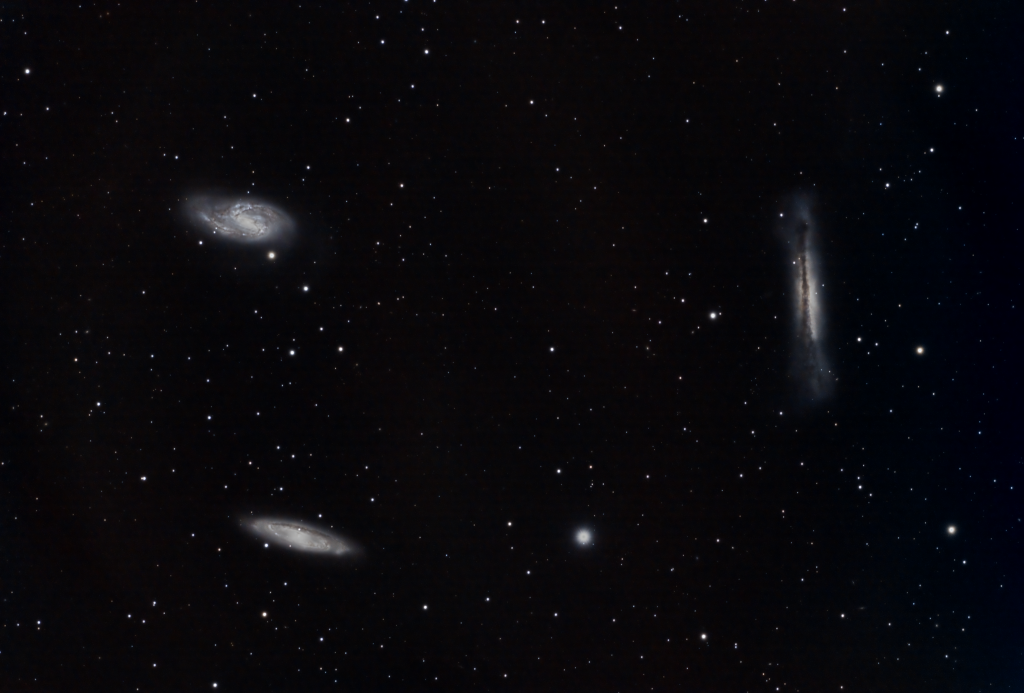
Similar Posts
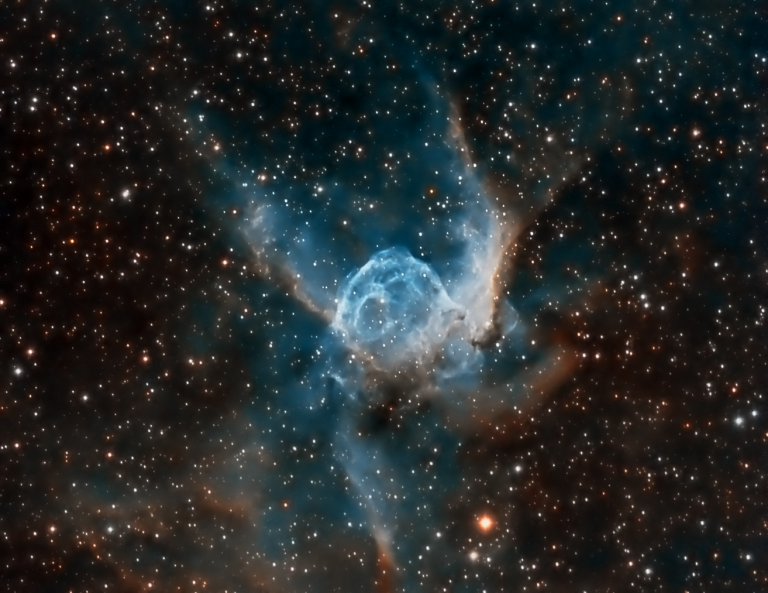
Thor’s Helmet
An interesting emission nebula 30 light years across. Imaged with narrowband filters.

A golden globular cluster: M14
I’ve imaged this one before, but I keep coming back to it because I just can’t believe its golden color is real. But even after applying all I’ve learned about color calibration – I can say pretty definitely that these are its true colors. It’s also benefited from advances in image processing software, making the…
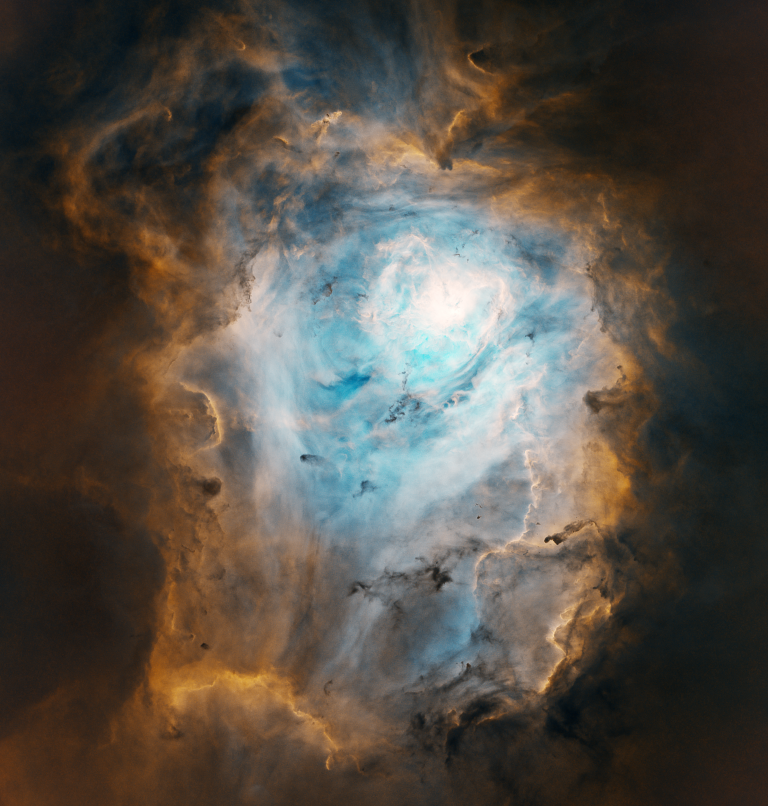
The Lagoon Nebula (M8)
This is a bright, popular nebula deep within the summer Milky Way… but it’s low in the sky, and this is the first time I’ve been able to capture it above the trees. Still, short summer nights and cloudy summer weather present its challenges. Shown processed in the “Hubble palette” and an approximation of its…
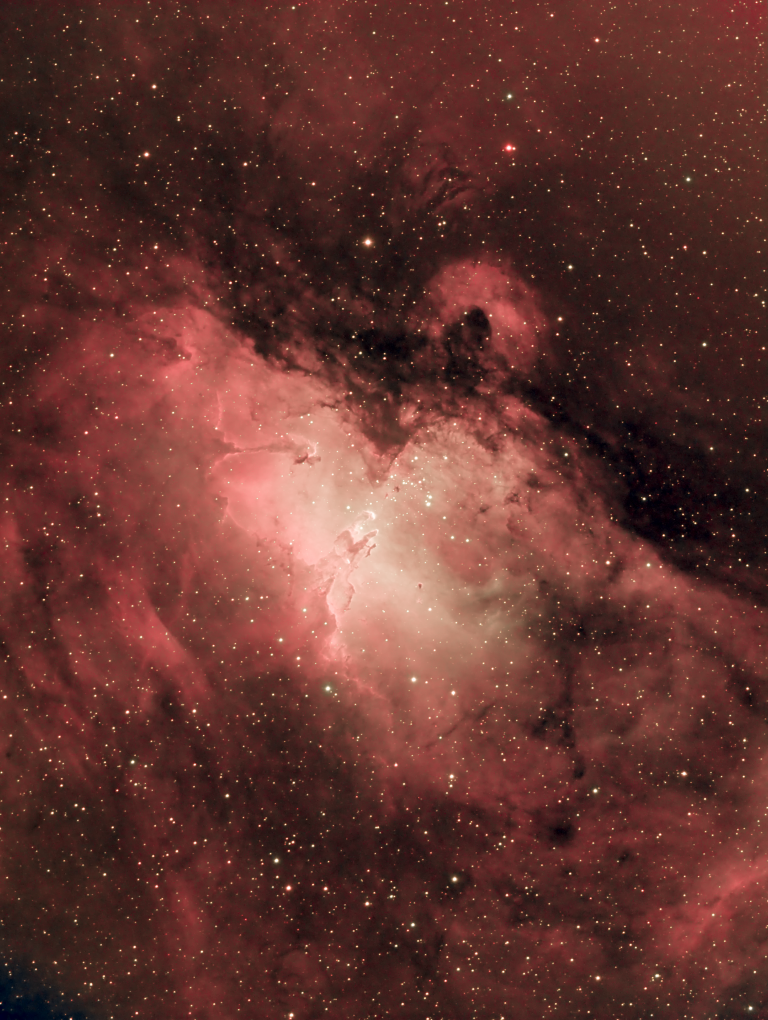
Beating light pollution with a new synthetic RGB algorithm
Imaging deep sky objects from a suburban driveway forces one to find ways to deal with light pollution. Light pollution is the enemy of astronomers – but in reality, there are ways around it. Some of the most beautiful objects in the cosmos are called emission nebula. They are clouds of gas, often where new…
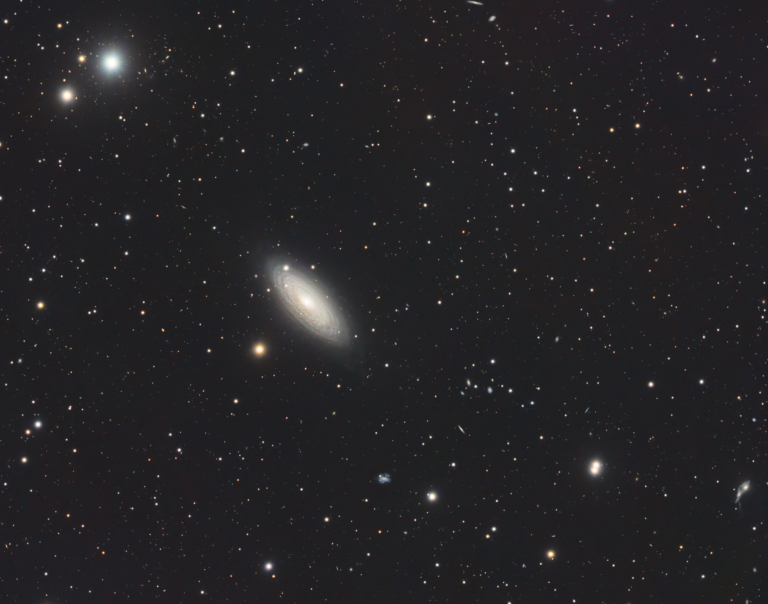
The galaxy NGC2841, 46 million light-years away.
This is a somewhat obscure target; at 46 million light-years distant, it’s hard to capture much detail on it from Earth. But that’s what makes it interesting and challenging! Located within the constellation Ursa Major, this is a flocculent spiral galaxy notable for its massive central core. Look around in the background, and you’ll find…

The Heart of the Heart Nebula
The Heart Nebula is a little too big to fit within the field of view of my telescope, but its inner “heart” is interesting in its own right. This is star cluster Melotte 15, formed from the gases within the Heart Nebula – and some of that gas remains, forming interesting clouds and formations where…

